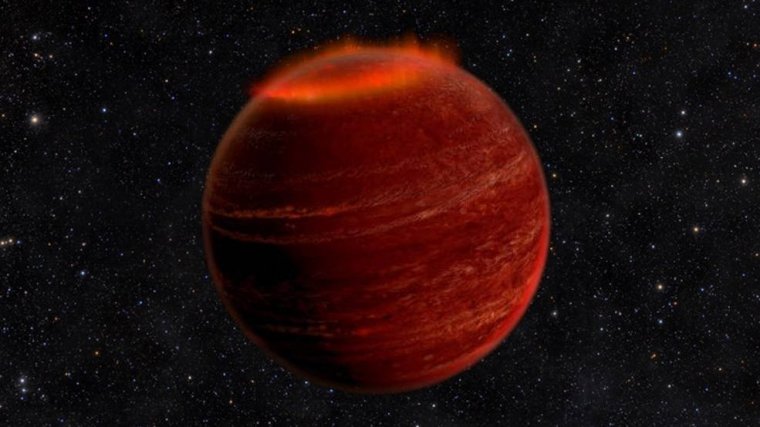| News / Science News |
Powerful Auroras Found at Brown Dwarf
NASA | AUGUST 2, 2015
Mysterious objects called brown dwarfs are sometimes called "failed stars." They are too small to fuse hydrogen in their cores, the way most stars do, but also too large to be classified as planets. But a new study suggests they succeed in creating powerful auroral displays, similar to the kind seen around the magnetic poles on Earth.

This artist's concept shows an auroral display on a brown dwarf. ![]()
On Earth, auroras are created when charged particles from the solar wind enter our planet's magnetosphere, a region where Earth's magnetic field accelerates and sends them toward the poles. There, they collide with atoms of gas in the atmosphere, resulting in a brilliant display of colors in the sky.
Brown dwarfs are generally cool, dim objects, but their auroras are about a million times more powerful than auroras on Earth, and if we could somehow see them, they'd be about a million times brighter, Hallinan said. Additionally, while green is the dominant color of earthly auroras, a vivid red color would stand out in a brown dwarf's aurora because of the higher hydrogen content of the object's atmosphere.
Researchers examined brown dwarf LSRJ1835+3259, located about 20 light-years from Earth.
Given that there's no stellar wind to create an aurora on a brown dwarf, researchers are unsure what is generating it on LSRJ1835+3259. An orbiting planet moving through the magnetosphere of the brown dwarf could be generating a current, but scientists will have to map the aurora to figure out its source.
The discovery could help scientists better understand how brown dwarfs generate magnetic fields. Additionally, brown dwarfs will help scientists study exoplanets, planets outside our solar system, as the atmosphere of cool brown dwarfs is similar to what astronomers expect to find at many exoplanets.
YOU MAY ALSO LIKE





